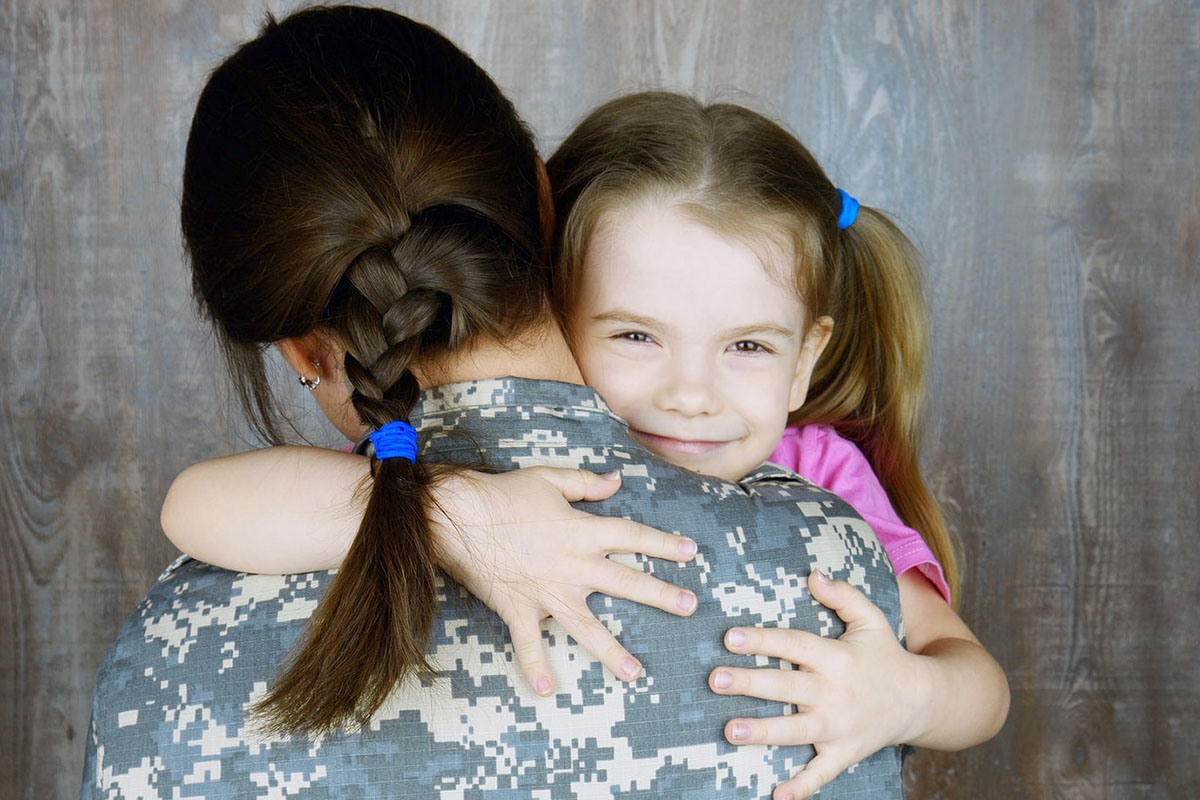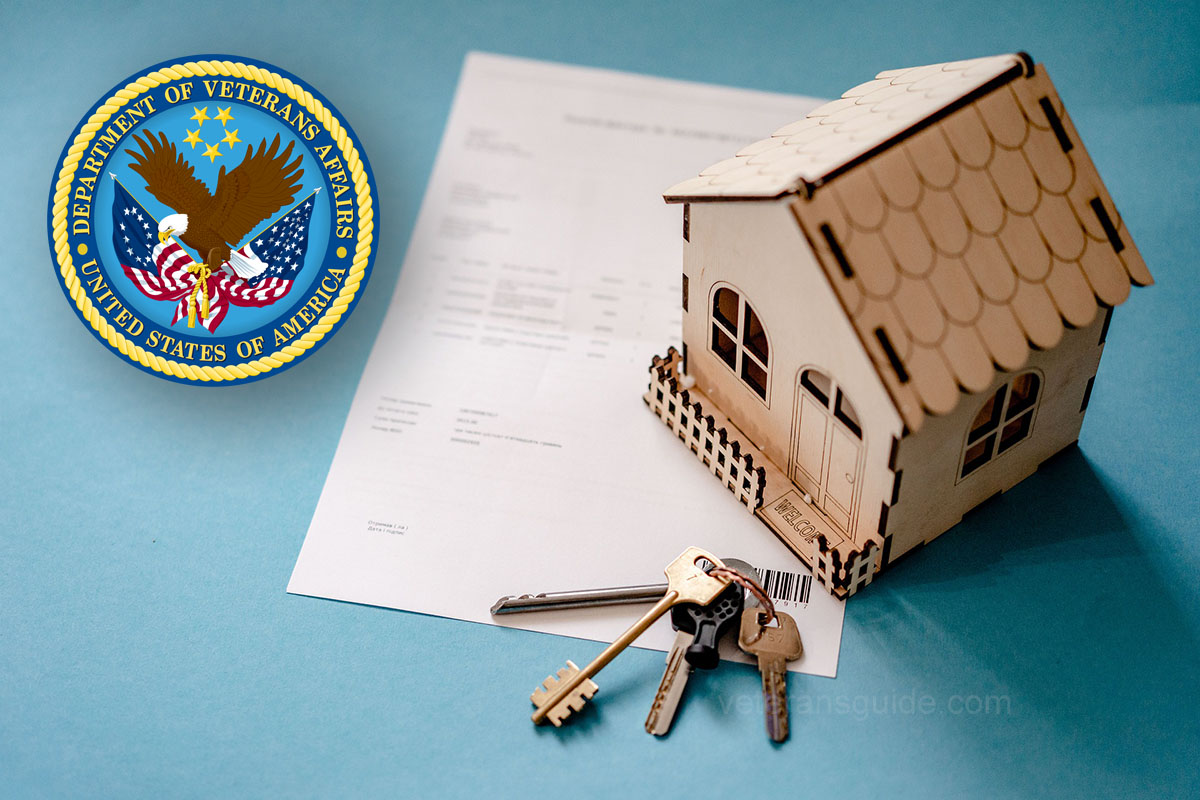VA Benefits for Survivors, Spouses, and Dependents
In addition to benefits for veterans, the Department of Veterans Affairs (VA) issues benefits to survivors, spouses, dependents, and caregivers. VA dependent benefits and other programs for family members and caregivers may include healthcare coverage, financial aid for education, burial costs, and more.
Benefits for Family Members and Caregivers of Veterans
- VA Survivor Benefits
- VA Spouse Benefits
- VA Dependent Benefits
- VA Caregiver Benefits
A spouse, surviving spouse, dependent child, or caregiver of an eligible veteran can qualify for various VA benefits programs. The VA offers some of these programs to multiple groups to offset the costs of education and training, life insurance, home purchases, and other necessities for families.
Veterans do not need to qualify for VA disability compensation with a service-connected disability for their families to be eligible for every benefit. However, this is a requirement for some programs. Tuition assistance, health care, and home loans are a few examples of benefits for veterans that are also offered to any eligible veteran family.
Benefits for Family Members and Caregivers of Veterans
The following benefits for veterans are ones that family members and caregivers may also apply for if eligible.
VA Survivor Benefits
A survivor is a spouse or dependent child or parent of a service member who died on active duty service or from an injury, illness, or disability relating to their service. The VA pays benefits to survivors of deceased veterans to help with education, healthcare, and more.
Health Benefits
The VA offers two primary healthcare programs for survivors: TRICARE and The Civilian Health and Medical Program of the Department of Veterans Affairs (CHAMPVA).
TRICARE provides health coverage for the survivors of deceased family members. This comprehensive health coverage pays for services provided by both military and in-network civilian health care systems and providers.
CHAMPVA is a cost-share program that covers many essential health services for survivors. Family members may qualify for CHAMPVA if they do not qualify for TRICARE. For a family member to get these survivor benefits, the veteran must be rated as permanently and totally disabled, died from a service-connected disability, or was rated as permanently and totally disabled when they died.
Education and Training Benefits
Several VA education benefits exist for veterans and their families. Survivors can receive educational benefits if the veteran died while on active duty due to their service-connected disability or is permanently and totally disabled with a service-connected disability.
Chapter 35 benefits, also known as the GI Bill, offers separate programs for survivors and dependents. One, Survivors’ and Dependents’ Educational Assistance (DEA), pays for college degree programs, certificate programs, apprenticeships, and on-the-job training in the form of a monthly benefit to cover tuition and fees.
The Marine Gunnery Sergeant John David Fry Scholarship (Fry Scholarship) pays survivors of members of the Selected Reserve with a service-connected disability or of the Armed Forces who died on or off active duty. The benefit pays up to $25,162.14 per year for tuition and fees.
Home Loans and Financial Counseling Benefits
An unmarried surviving spouse interested in buying a home can get a VA-backed loan. These loans can also be used to refinance a current mortgage, build a new home, or repair your current home. VA loans can come with no down payment, affordable closing costs, and low interest rates.
Eligibility requirements include being able to get a Certificate of Eligibility (COE) through the VA and meeting a lender’s requirements for credit, income, and other qualifications.
Life Insurance and Pension Benefits
VA pension and life insurance benefits, sometimes known as death benefits, can support a survivor’s financial needs after their loved one’s death.
Veterans who hold a VA life insurance policy at the time of their death will pass their benefits to surviving spouses or children. A VA Survivors Pension pays a monthly benefit to eligible survivors veterans of active duty service. Surviving children must be under the age of 18, or under the age of 23 if attending an eligible school full-time.
Surviving Spouse and Dependent Compensation
VA Dependency and Indemnity Compensation (VA DIC) is a tax-free monetary benefit paid to the families of disabled veterans who died as a result of their service-connected disabilities. The rates for these VA benefits vary depending on the type of dependent, which includes spouses, children, and parents.
Survivors must apply for DIC benefits after the veteran’s death using the correct form for their survivor status. Survivors may also file an intent to file form to have more time to complete the application process and potentially qualify for retroactive DIC payments.
Burial Benefits
The VA provides financial assistance for survivors to cover burial costs of their veterans. Veterans with honorable discharges may be buried in a National Cemetery at no charge. Other burial benefits can cover some funeral costs, memorial items, and bereavement counseling for survivors. Bereavement counseling consists of counseling and referral services to get surviving family members the help they need after a loved one’s death.
VA Spouse Benefits
Spouses of veterans can access several forms of assistance, such as educational financial aid, burial compensation, and life insurance benefits.
Health Benefits
VA health benefits can be as beneficial to a veteran’s spouse as they are to the veteran. Many veteran spouses receive TRICARE benefits, which provide comprehensive coverage for preventative, treatment, and emergency services.
Spouses must be registered in DEERS to receive these VA benefits. The veteran and their spouse may choose from different plans, including TRICARE Prime, TRICARE Select, and for Medicare recipients, TRICARE for Life. Spouses may also qualify for the Federal Employees Dental and Vision Insurance Program (FEDVIP) to receive vision and dental coverage.
Education and Training Benefits
Veterans who are considered permanently and totally disabled by the VA may qualify for their spouse to receive an education benefit through their GI Bill. VA education benefits can pay for a degree program, certificate program, or training program to help the spouse achieve their career goals.
The veteran will need to apply for these benefits for their spouse. Spouses may receive monthly benefits to cover tuition, books, fees, and other educational costs through the DEA program.
Employment Benefits
As a dependent of a military veteran, a spouse can receive educational and career counseling through the VA’s Personalized Career Planning and Guidance (Chapter 36). Chapter 36 benefits help military spouses discover what their career interests are and provide them with counseling and resources to help them achieve their goals.
This vocational rehabilitation benefit is free for military dependents, but veterans must qualify for a VA education benefit, like the Post-9/11 GI Bill, for their spouses to qualify.
Life Insurance Benefits
Veterans eligible for life insurance benefits through the VA can add their spouse to their policy through the Family Servicemembers’ Group Life Insurance (FSGLI) program. Veterans must have an FSGLI life insurance plan while on active duty service with their spouse added to the policy to transition their spouse to a Veterans’ Group Life Insurance (VGLI) policy once they leave the service.
FSGLI gives spouses up to $100,000 in life insurance coverage.
Burial Benefits
The VA allows spouses to secure a burial spot in a National Cemetery just like a veteran, even if the veteran does not get buried in one. To determine their spouse’s eligibility, a veteran can file a pre-need eligibility application. Spouses may also apply, but they’ll need the veteran’s information, including their Social Security Number and DD214, to apply.
VA Dependent Benefits
Eligible dependents of veterans may qualify for education benefits, life insurance, and other helpful forms of assistance.
Health Benefits
A dependent child may receive TRICARE or CHAMPVA benefits through the VA. For families who do not qualify for TRICARE, CHAMPVA can cover some of the costs of medical care. A veteran must be permanently or totally disabled from a service-connected disability to be eligible for CHAMPVA.
Education and Training Benefits
The VA will pay for some education and training for dependent children of qualifying veterans. Adult children between 18 and 26 can be eligible for DEA to pay for college programs, vocational training, and other career-focused programs and services. This educational benefit can also cover housing costs for students who wish to live on campus at their college or university.
Employment Benefits
If a veteran qualifies for a VA education benefit, their dependent child could receive employment benefits through the VA. Career counseling helps veteran dependents meet their career goals by discussing educational benefits, connecting them with community resources, and planning their best career pathway.
Life Insurance Benefits
Like spouses, child dependents can be covered by a veteran’s life insurance policy. After leaving the service, a servicemember can add their children to their FSGLI and transition to a VGLI plan. Dependent children get free coverage and receive $10,000 in coverage each.
Burial Benefits
A veteran’s dependent children may be eligible for burial in a National Cemetery even if the veteran isn’t. A minor child and some unmarried adult children of the veteran can receive this benefit.
VA Caregiver Benefits
The VA offers the VA Caregiver Support Program, which incorporates different programs and services for people who care for disabled or elderly veterans. The programs prioritize skills training, mentoring, and resource connections for veteran caregivers.
Program of General Caregiver Support Services (PGCSS)
The PGCSS is a program for general caregivers of an elderly or disabled veteran. For the caregiver to receive assistance, the veteran must be enrolled in a VA health care program and needs help completing daily tasks, like dressing or eating.
The program consists of skills training resources that prepare caregivers for emergencies, prevent suicide, and more. Caregivers also learn tools and techniques to help them manage their own stress and well-being while caring for a veteran. PGCSS may also pay for respite care to temporarily relieve caregivers from their duties.
Program of Comprehensive Assistance for Family Caregivers (PCAFC)
Family members who care for a veteran and full-time and live-in caregivers may qualify for PCAFC. This program is specifically for family and live-in caregivers of a veteran with a disability rating of at least 70%. The veteran must also need at least six months of full-time care for a family member to qualify.
PCAFC pays for caregiver training and mental health counseling for the caregiver. Caregivers may also receive a monthly payment, respite care, and health care through the CHAMPVA program.
VA Spouse, Dependent, and Survivor Benefits
VA dependent benefits, spouse benefits, and survivor benefits help families of veterans afford health care, life insurance, and higher education. These veterans’ benefits can also assist spouses and children get on the right path to their chosen career through career counseling and resources.
Families of a wartime veteran may even get burial benefits and monthly pension benefits after the veteran’s death. If you need assistance with your VA family benefits, reach out to your local Veterans Service Organization or a VA disability attorney.




